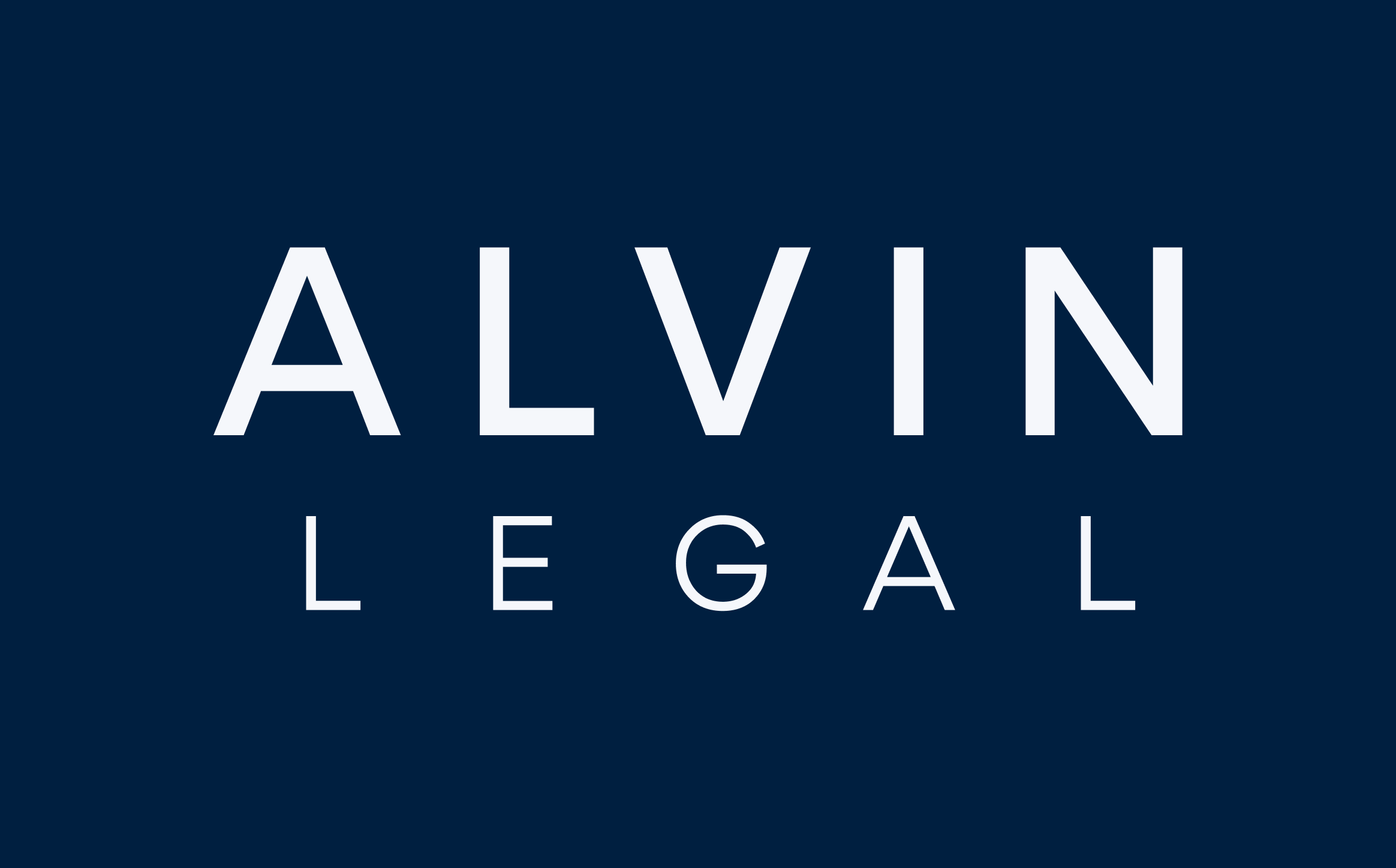1. Trade Mark Scoping
1. Choosing the type of trade mark
2. The trade mark owner
3. Goods and services
4. Conflict searching
1/Choosing the type of trade mark
(a) A trade mark may be a letter, word, name, signature, numeral, device, brand, heading, label, ticket, aspect of packaging, shape, colour, sound or scent, or any combination of those.
(b) Having said that, the most common trade marks are:
| Type | Example |
| Word mark | ALVIN LEGAL |
| Sign mark |
(c) Trade mark applicants are faced with the following options when dealing with a composite mark:
(i) File a single trade mark application for the word mark only.
(ii) File three separate trade marks for the word mark, sign mark and composite mark.
(d) Whether three separate trade mark applications are required will depend on whether the composite mark contains a sign that is a distinguishing feature (as opposed to only being descriptive of the word mark).
(e) In the example given above, a single trade mark application for the word mark or the composite mark would suffice, as the sign is not a distinguishing feature of the mark. If, however, the composite mark had a separate mascot, then three trade mark applications may be necessary to sufficiently protect all features of the mark.
2/The trade mark owner
(a) The trade mark owner should be the person who was the author or the first to use the trade mark.
(b) If a trade mark application is filed with the incorrect applicant, the trade mark application (and subsequent registration) will be vulnerable to opposition and it will not be possible to cure the error by amending the application (or registration). Instead, a new trade mark application will need to be filed.
3/Goods and services
(a) There are 45 classes of goods and services for which trade marks may be registered.
(b) The 45 classes of goods and services are based on the Nice Classification (NCL), which is an international classification of goods and services applied for the registration of marks. A new edition is published every five years and, since 2013, a new version of each edition is published annually.
(c) It is important to note that, once you file your trade mark application, you cannot expand your claimed goods and services. You would have to lodge a separate trade mark application for any additional goods or services.
4/Conflict searching
(a) Before filing the trade mark application, your trade mark lawyer or attorney will conduct searches to check whether there are any earlier trade mark registrations or applications that may conflict with your proposed trade mark application.
(b) Keeping the scope of your goods and services narrow will help reduce potential conflicts.
2. Headstart Application
(a) IP Australia offers an optional pre-filing assessment, where IP Australia will give an indicative, non-binding view on any objections it might raise if your trade mark application is filed.
(b) A Headstart application is usually a good idea where there are concerns about whether a proposed trade mark has the requisite distinctiveness to pass the examination stage.
(c) IP Australia’s turnaround time for Headstart applications is five business days. Where a Headstart application is converted into a full trade mark application, IP Australia will formally examine the trade mark application within one month (instead of its standard six month turn-around time).
(d) The Headstart application step is optional, and in most cases it is not needed.

3. Full Trade Mark Application
(a) This is the formal trade mark application where your trade mark will receive a priority date.
(b) Although your trade mark will not become enforceable until its registered, once registered, your trade mark will become enforceable from the priority date (which will pre-date the registration date).
(c) The priority date also becomes important when filing an international trade mark application through the Madrid Protocol, as international applications filed within six months of the priority date of your Australian trade mark will share the same priority date with your Australia trade mark application.
4. Examination
(a) After your trade mark application is filed, it goes into a stockpile to be examined.
(b) IP Australia will either raise its objections to your trade mark, or it will accept your trade mark.
(c) IP Australia’s current timeframes for this step are:
| Type | Timeframe |
| Domestic trade mark application | Six months |
| International Non-Madrid | Six months |
| Madrid protocol application | Seven months |
| Requested expedited | One month |
| Converted Headstart application | One month |
5. Opposition
(a) Once IP Australia accepts your proposed trade mark, it will then publish your trade mark in the Australian Official Journal of Trade Marks, giving third parties a two-month window to oppose your trade mark.
(b) A third party may oppose a trade mark application any of the following grounds:
(i) The trade mark would be likely to deceive or cause confusion.
(ii) The trade mark is substantially identical with, or deceptively similar to, an earlier trade mark registration or application.
(iii) The trade mark applicant is not the true owner.
(iv) The trade mark contains a false geographical indication.
(v) The opponent had first use of a similar trade mark for similar goods or services.
(vi) The trade mark applicant does not intend to use the trade mark.
(vii) The trade mark application was made in bad faith.
(c) If a third party raises any objections, you will have to defend the opposition if you wish to continue with the trade mark application.
6. Registration
(a) Once your proposed trade mark passes the opposition stage, IP Australia will then enter your trade mark into the trade marks register.
(b) Trade mark registrations last 10 years, and can be continually renewed for successive 10-year periods.
(c) In Australia, the first 10-year period commences on the date the trade mark was first filed, and not the date the trade mark registration is granted.
7. Renewal
A registered trade mark opens up for renewal six months before the registration expires, and may be renewed within six months after expire trade mark registration is granted.
8. Bonus Tip: Using The Trade Mark Symbol
A trade mark applicant should not use the ® symbol with trade mark until trade mark registration has been granted. The ® symbol indicates that the trade mark is registered, and therefore can be taken to be misleading if used before trade mark registration is granted. Trade mark applicants may, however, use the TM symbol in conjunction with pending trade marks, which indicates that you intend to claim trade mark rights.


